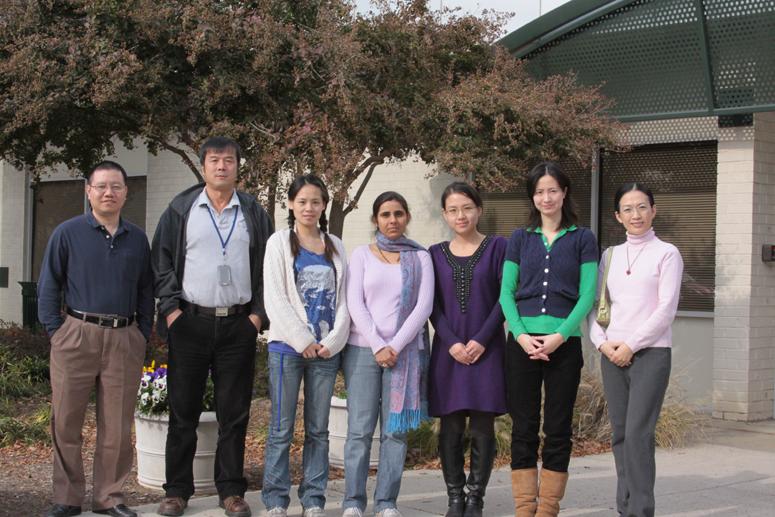Chemotaxis Signal Section
Tian Jin, Ph.D.
Chief, Chemotaxis Signal Section

Major Areas of Research
- Mechanisms underlying the GPCR-mediated chemotaxis in Dictyostelium discoideum
- Mechanisms involved in chemotaxis of immune and cancer cells
Program Description
The research in the Chemotaxis Signal Section is focused on understanding the cellular and molecular mechanisms underlying chemotaxis of eukaryotes. Our research strategy to define the signaling network controlling chemotaxis relies on the use of the genetically amendable model organism Dictyostelium discoideum. We are developing cutting-edge live cell imaging technologies that visualize signaling events in live cells in real time, constructing computational models to comprehend the signaling network as a system, and discovering novel mechanisms involving G-protein-coupled receptor (GPCR)-mediated cell migration. Our long term goal is to elucidate molecular mechanisms underlying chemokine GPCR-mediated migration of immune cells and cancer cells.
Biography
Education
Ph.D., 1994, Rutgers Robert Wood Johnson Medical School, New Brunswick, NJ
B.S., 1984, Peking University, China
Dr. Jin received his B.S. in biology from the Peking University, China, in 1984 and his Ph.D. from the department of biochemistry at the Robert Wood Johnson Medical School at Rutgers-UMDNJ in 1994. From 1994 to 2000, he was a postdoctoral fellow in the department of biological chemistry at Johns Hopkins University School of Medicine. Dr. Jin was appointed instructor in the department of cell biology and anatomy at Johns Hopkins University School of Medicine in 2001. In July 2001, he joined the Laboratory of Immunogenetics as a tenure-track investigator. In 2009, he became senior investigator at NIAID.
Selected Publications
Yan J, Mihaylov V, Xu X, Brzostowski JA, Li H, Liu L, Veenstra TD, Parent CA, Jin T. A Gβγ effector, ElmoE, transduces GPCR signaling to the actin network during chemotaxis. Dev Cell. 2011. In press.
Jin T. GPCR-controlled chemotaxis in Dictyostelium discoideum. Wiley Interdiscip Rev Syst Biol Med.2011 Nov-Dec;3(6):717-27.
Xu X, Meckel T, Brzostowski JA, Yan J, Meier-Schellersheim M, Jin T. Coupling mechanism of a GPCR and a heterotrimeric G protein during chemoattractant gradient sensing in Dictyostelium. Sci Signal. 2010 Sep 28;3(141):ra71.
Isik N, Brzostowski J, Jin T. An Elmo-like protein associated with myosin II restricts spurious F-actin events to coordinate phagocytosis and chemotaxis. Dev Cell. 2008 Oct 14;15(4):590-602.
Fang J, Brzostowski JA, Ou S, Isik N, Nair V, Jin T. A vesicle surface tyrosine kinase regulates phagosome maturation. J Cell Biol. 2007 Jul 30;178(3):411-23.
Xu X, Meier-Schellersheim M, Yan J, Jin T. Locally controlled inhibitory mechanisms are involved in eukaryotic GPCR-mediated chemosensing. J Cell Biol. 2007 Jul 2;178(1):141-53.
Research Group

(From right) Xuehua Xu, Ph.D.; Youhong Wang, Ph.D.; HongYan Li; Nidhi Gera, Ph.D.; Yan Chen; Tian Jin, Ph.D.; Jianshe Yan, Ph.D.
Videos
Chemotaxis. Cells migrate in a gradient of a diffusible chemoattractant.

